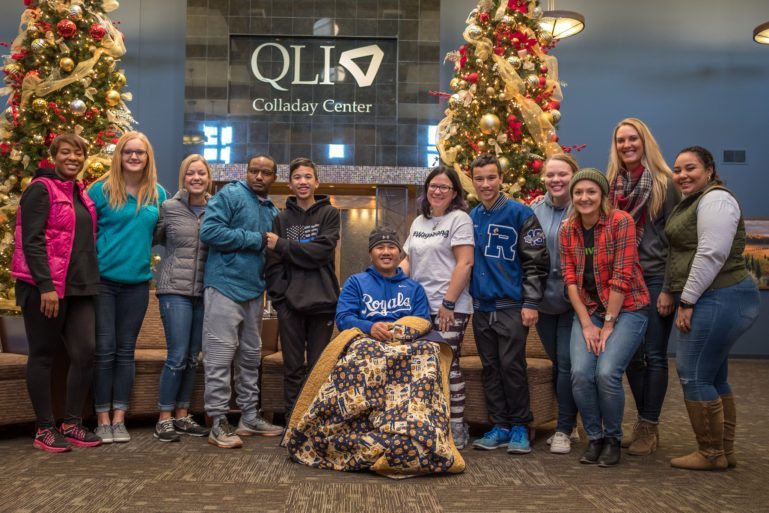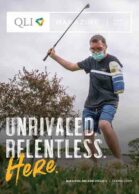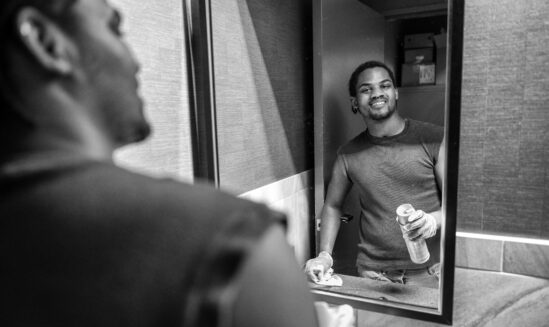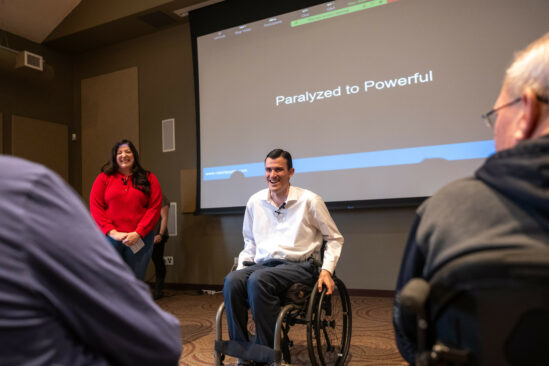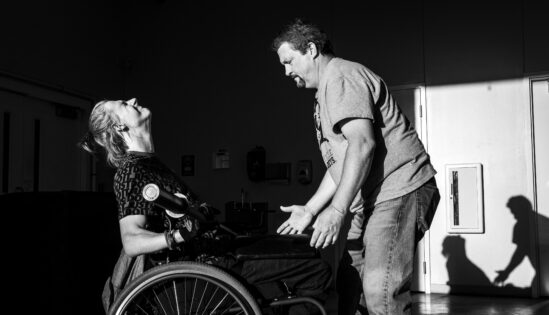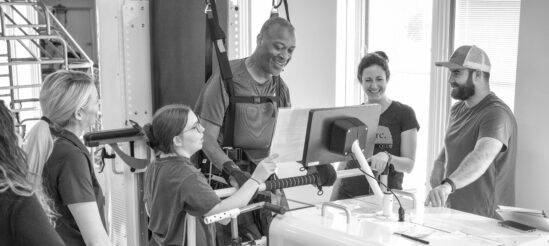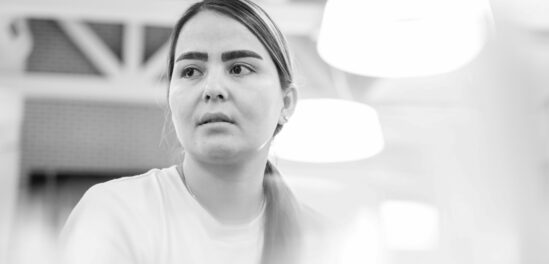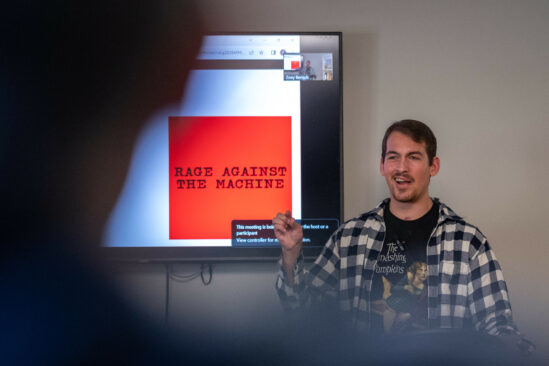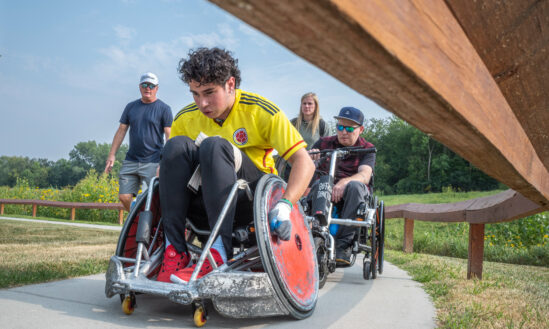ast December we shared the incredible story of Tom Wagstaff, an Independence, Missouri police officer who sustained a brain injury in the line of duty and came to QLI on his rigorous path to recovery.
We sat down with Nealey Hoffman, one of QLI’s talented speech therapists and a key member of Officer Wagstaff’s rehabilitation team. Less than a year into her tenure at QLI, Nealey has proven herself a force within our brain and spinal cord injury rehabilitation services. She shared her unique insight into being a QLI team member and gave us a glimpse into the effort that went into rebuilding Tom’s life.
—
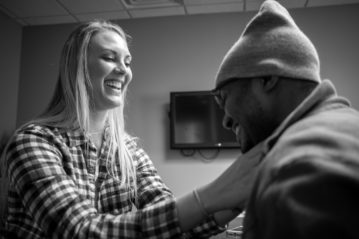 Tell us a little bit about your path to QLI.
Tell us a little bit about your path to QLI.
I’m originally from a small town in Nebraska. I went to the University of Nebraska-Lincoln for my undergraduate studies, which is where I got my start in speech pathology. From there I went to Wichita State for grad school. That’s where I actually first heard about QLI.
As I was going through my externships, I was here in Omaha. One of those externships was in a hospital setting. It was pretty intense working with acute cares. The patients all had short stays—I didn’t really get to know any person or patient family there. I worked in both inpatient and outpatient settings, so I got a lot of experience and learned a lot of basic skills while I was there.
That’s when I saw the opening for a speech pathologist at QLI. And, yeah, everything from there just fell into place.
You’ve been a part of QLI for how long now?
Since June [2017].
And just for clarity, how long was your externship at the hospital?
It was essentially a full-time job for ten weeks.
Talk a little bit about working with Tom Wagstaff, someone whose program you were so involved with. When he arrived, what was that process like for you?
It really stands out because Tom’s case was where I started my journey with QLI as well. He was my first big case. I was such a new clinician—I knew the extent of what had happened to him and knew a little about his background. But I didn’t see the journey that was in front of me. Tom’s progress at QLI was really a learning experience for both of us.
When he came in, he was very articulate. He was talking, everything he was saying was accurate. But you could tell there were skills we needed to work on, things we could improve.
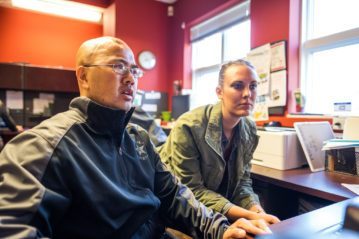 What were some of those things?
What were some of those things?
Primarily, it was a lot of his high-level reasoning, problem solving abilities. That judgment piece. His memory was pretty strong but when you put him in a novel situation it wasn’t as simple for him to problem solve through challenges.
One of the ways we started training his critical thinking was by building a presentation with him. He really wanted to get back to the police force in some capacity, so we built the presentation from the perspective of, okay, how can Tom go back to teach a class? We worked together to build a lot of that content with him.
But there were other ways that training happened too. Sometimes with cooking or navigating campus. We trained by giving him real-life tasks to build his awareness, increase his ability to complete complex goals and maintain his own safety.
As you’re working with Tom, how much autonomy do you have in your role and how much are you relying on your team?
Oh my gosh, if I didn’t have my team there with me, I don’t know. It was such a new situation for me, so being creative with my team—bouncing ideas off of the other clinicians working with Tom to figure out what we could do to best build his skills up—that was really powerful.
His awareness was a double-edged sword. In some cases, individuals with brain injuries can tell you what is wrong, but in the moment they sometimes don’t understand how it’s affecting what they’re doing. As a team we collaborated with Tom in a ton of positive ways to make sure he knew when he was succeeding and growing while also pushing him to correct the things we had to work on.
I don’t know how that would’ve been possible without our clinical staff working together. From our physical therapists, our occupational therapists. Nurses. The team challenged me to think bigger in a lot of ways. We really got creative with his program.
Not only that, but we were in regular contact with the Independence Police Department. We talked a lot about how Tom was going to be reintegrated into the police force.
Was that pretty new, that process of reaching out to the police department?
Oh, for sure.
This is something you don’t learn in school, you don’t learn working at the hospital. The whole piece of reaching out to work or family was something I’d never been involved in. But I love it, that’s the part of the job I love the most—getting to be more than just a therapist but actually becoming a part of their life.
What I realized most in this job is that the idea of “speech therapy” is hard for people to understand. Speech therapists don’t just work on speech. We should be called something like “Cognitive Therapists,” in reality. It’s so abstract, it’s hard to understand what we do. Walking, for instance, is something that’s black and white. It’s easy to see when someone is making progress. But on the cognitive side, that’s harder to show. Giving friends and family and Tom’s fellow officers a true sense of how Tom is growing was very meaningful. It’s very important.
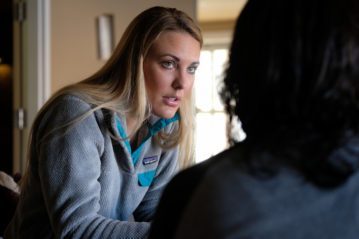 Do you feel like, during your time in the hospital, cognitive therapists were really fulfilling the same role as they do here?
Do you feel like, during your time in the hospital, cognitive therapists were really fulfilling the same role as they do here?
You know, I was working on similar basic skills there as I do at QLI. The cognitive piece, expression and comprehension, swallowing. But it didn’t have the same impact it does here, because there you’re in a four-walled room. You’re doing paper and pencil tasks. Some of it isn’t even research-based, to be honest. In a lot of cases it’s just happening to fill a forty-minute session.
At QLI, it’s so different. You’re seeing people in a real-life setting. When we take brain injury survivors on home visits you can see firsthand, okay, this person is really struggling with Situation X, Y, or Z. It’s powerful to put someone who is recovering into a real-life situation. You can see what goes wrong. You can see what you need to fix, and how.
In a hospital setting, that’s just not an option.
That’s the part that’s hard to describe to people about QLI.
It is. You know, in a hospital setting, you’re trying to hit productivity hours. You’re trying to meet insurance needs. You’re typing half of your session while setting a patient up with therapies. To me, that isn’t fulfilling that person’s needs.
Here, it’s amazing that we have a lot of freedom and creativity. We can build our schedule around what that person needs and dedicate the hours to making sure that person is actually getting better.
Earlier, you said that connecting with people outside of the patient isn’t something you learn or take on in school.
I always say to people they should spend maybe a semester doing classwork and the rest of the time doing externships in a real setting. I had a great foundation with my classes but it was so valuable to put that knowledge to practice. Just like anything else, you benefit the most by being immersed in what you’re learning and really applying those skills.
I think QLI is where I’ve learned the most. I’ve even had friends tell me I’ve grown as a person since starting here.
I didn’t realize the role I would have here. A speech therapist isn’t only responsible for therapies. I love it because it changes every day because it’s always different. And because each person is always so different.
On that note, what was the most gratifying thing about working with Tom?
I think about sitting at his homecoming presentation, crying, when he got the Purple Heart from his son. It makes me tear up right now.
It was amazing seeing him with his fellow officers. There were probably 500 in that room. It was just amazing. Tom standing there, both of his sons were by him. Seeing the amount of support that he has and seeing how far he’s come.
To know that you helped that happen in some way was worth it in itself.
